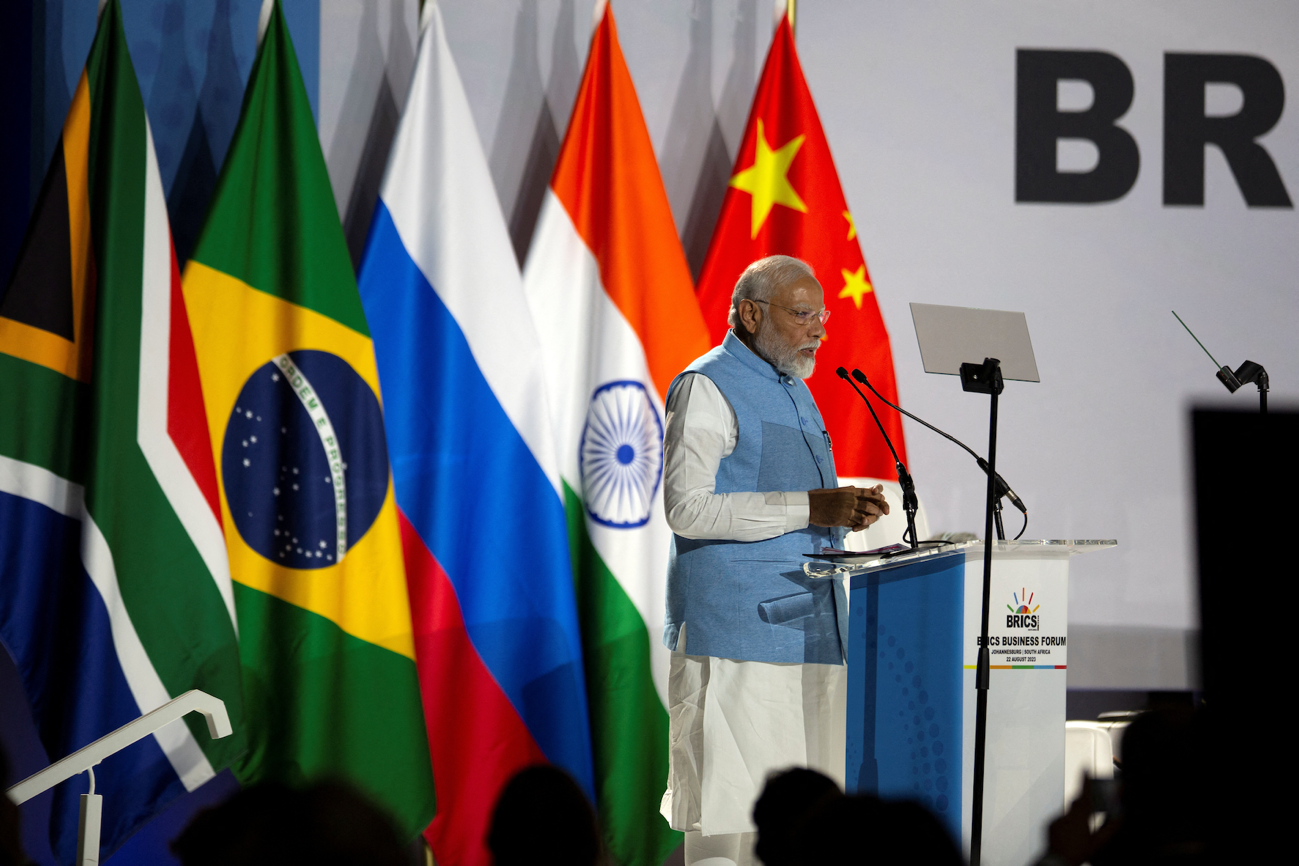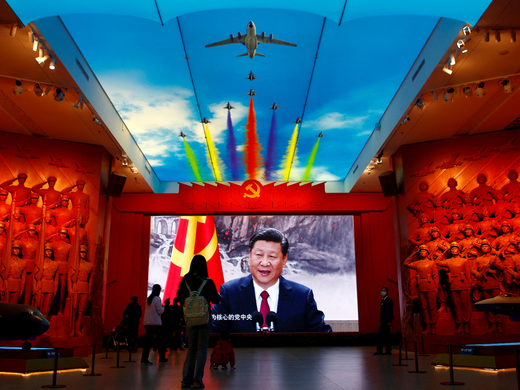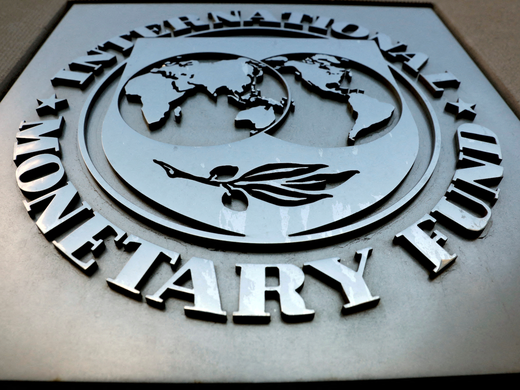The BRICS, a group of large emerging markets (Brazil, Russia, India, China and South Africa, imminently to be joined by Argentina, Egypt, Ethiopia, Iran, Saudia Arabia and the United Arab Emirates), are holding their fifteenth summit in Johannesburg from August 22 to August 24, with an agenda aimed at mounting a BRICS-led Global South challenge to the incumbent but somewhat worse-for-the-wear US-led global economic order. On the agenda was expansion: expansion of the group (some 40 developing countries are said to be interested in joining); expansion of the role of the BRICS New Development Bank; (de-)expansion of the role of the US dollar in international commerce; and expansion of economic ties between the BRICS and “friends of BRICS” (Global North not included).
Why Are We Talking About This?
There are two reasons. One is an accident of history. The second is a pre-eminent puzzle of economics.
First, for completely different reasons, in the late 1990s, each of the then four original BRIC economies was on a rebound from a slump or crisis experienced in the early 1990s:
- Brazil, rebounding from hyperinflation under the “Plano Real” (“Real Plan”) adopted in 1994;
- Russia, rebounding from economic free fall in the wake of the dissolution of the Soviet Union in 1991 and finally entering a growth phase following its partnership agreement with the North Atlantic Treaty Organization;
- India, bouncing back from its 1991 balance of payments crisis under Finance Minister Manmohan Singh’s economic liberalization policies that ended the infamous “licence, permit, quota raj”; and
- China, recovering from its post-Tiananmen Square crisis following Deng Xiaoping’s famous “Southern Tour” in 1992.
South Africa, which joined the group in 2011, had a similar timing, with the end of apartheid and restoration of a democratically elected government in 1994 launching the country on a path to recovery.
The synchronized rebound prompted Goldman Sachs economists to coin the term BRICS and to project great things for them by extrapolating their growth. The industrialized country boom of the 2000s provided the boost to these economies that, at least superficially and temporarily, ratified the Goldman Sachs analysis. When the Global North plunged into the Great Recession of 2008–2009, emanating from the US housing sector, the BRICS group institutionalized itself by getting into summitry, triggering a new buzz cycle (as reflected in a steep increase in research publications about BRICS, peaking in 2013 and subsequently tailing off, as Matheus Machado Rech and Germano Luciano Almeida have analyzed).
Now, for the economic puzzle: the failure to see greater convergence of developing countries to the per capita incomes and livings standards of the advanced countries.
Basic economics attributes higher incomes to higher levels of machine and human capital and more advanced technology. On that basis, we anticipate that lower income countries will grow faster because, one, returns to capital should be higher in capital-poor countries, leading to higher investment rates; and two, technological diffusion from the advanced to the trailing countries will accelerate catch-up. Empirical studies have concluded that an initial gap should be closed at about two percent per year, meaning the half-life of a gap would be about 35 years.
However disappointingly slow two percent convergence per year may be, it still implies there was enough time in the 70-plus years of the postwar era for any initial gap between the rich and poor to have been closed. That has not happened.
It has not happened despite apparently unprecedentedly ideal conditions for technology diffusion given proliferation of global value chains, soaring foreign direct investment by technologically advanced companies, the creation of the internet to foster diffusion of knowledge, and the rapid adoption in developing countries of mobile devices to bypass the problems of inadequate fixed infrastructure.
And it has not happened despite widespread formulation of national development plans (many imitating the five-year plans of the Soviet Union that were thought at the time to show the way) and the emergence of a multilateral development industry, the explicit aim of which was to industrialize and systematize the process of transforming agrarian economies into modern industrial states. This was no small industry — it included the multilateral financial institutions, regional development banks, national development assistance programs and well-funded non-governmental organizations.
None of that has worked. We know this because we still have a Global South and a Global North. And that, in turn, provides the opening for the BRICS club to pitch a different way forward and to attract adherents. In effect, it gives the BRICS a new lease on life.
All of which is why we are talking about the BRICS and the Global South in the first place.
What Do the BRICS Bring to the Table?
The BRICS club positions itself as representing the “common interests of emerging market economies and developing countries” in a new, multipolar world order.
After the better part of two decades of institutional development, what can be inferred about the BRICS’ contribution to global governance — past, present and future?
To begin, the club draws obvious comparisons to the Group of Seven (G7), which is characterized as playing the role of an informal “steering committee” to forge common positions rolled out on broader stages. Like the G7 leaders, BRICS leaders issue communiqués setting out commitments on a wide range of contemporary issues. In fact, as reported by John Kirton at the University of Toronto, BRICS leaders made 844 commitments in some 32 areas between 2009 and 2021. The leading issues were international cooperation (78), economic development (73) and regional security (63). BRICS members’ compliance with commitments averaged 77 percent, similar to the G7 on its pledges, according to Professor Kirton.
We still have a Global South and a Global North. And that, in turn, provides the opening for the BRICS club to pitch a different way forward and to attract adherents.
With the international security situation now in its most precarious state since the Second World War, economic development having fallen well short of expectations, and climate change–driven catastrophes sweeping the globe, the record of “success” in meeting commitments only emphasizes the inadequacy of those goals. And it raises questions about what the BRICS club really offers as an alternative governance structure. The G7’s pledges are, of course, equally subject to this critique.
More specifically, on international cooperation, where the most critical issue is climate change, the BRICS members use the principles of “historical responsibility” and “common but differentiated responsibilities and respective capabilities” to punt. For example, the Joint Statement issued at the BRICS High-level Meeting on Climate Change in May 2022 stated: “We underline that developed countries should take the lead in scaling up mitigation actions and ambition and provision of climate financing [my italics].” So, not much leadership there.
As regards regional security, the incumbent BRICS nations are charter members precisely because of their population size and power. But as we’ve learned from Marvel Comics, with great power comes great responsibility. The recent “no limits” agreement between Chinese leader Xi Jinping and Russia’s Vladimir Putin, acknowledging each other’s “interests” in Taiwan and Ukraine, was finalized just before Russia’s full-blown attack on Ukraine. Putin, who did not attend the BRICS summit in person because the International Criminal Court has indicted him for war crimes related to his invasion of Ukraine, remains welcome in the BRICS club — at least virtually. How can this possibly resonate long-term with the Global South, which is comprised mostly of small powers whose security depends on respect for the principles of non-violation of borders and collective defence? Such smaller powers need to “balance” against potential aggressors (the quintessential example here is the Association of Southeast Asian Nations balancing between China and the United States).
On trade, the BRICS do not offer an alternative model. Far from forming an integrated trade bloc, each has its own regional trade agreement (Brazil: Mercosur; Russia: Eurasian Economic Union; China: Regional Comprehensive Economic Partnership [RCEP], India: South Asian Free Trade Area; and South Africa: South African Customs Union and the African Continental Free Trade Area) in addition to a plethora of other bilateral free trade agreements that follow established models. The dim prospects for a BRICS trade bloc are best illustrated by the fact that India has dropped out of RCEP, which would have given it a free trade agreement with China, while China has applied to join the Comprehensive and Progressive Agreement for Trans-Pacific Partnership — the perfection of the trade regime developed under US tutelage during its unipolar moment.
As an economic governance scheme, the most significant element the BRICS offer is China’s Belt and Road Initiative (BRI), which by 2023 had signed up some 140-plus partners. BRI partners do indeed receive preferred access to Chinese investments, as well as associated trade opportunities and the potential for technology transfer from an emerging technological power. Yet, they also face competition from the other 140 or so participants in the program, all vying for China’s limited resources and focus. From this perspective, the BRI is inferior to the multilateral World Trade Organization (WTO) agreement, which fosters trade not with a single hegemonic power but with all other WTO members.
On development, the BRICS New Development Bank, established in 2014 to serve as an alternative to the existing multilateral and regional development banks, still ranks as the club’s most visible achievement. After the better part of a decade of operations, it presently rivals the African Development Bank in scale, with a balance sheet total of almost $14 billion in outstanding loans as of 2021, compared to the African Development Bank’s $15 billion (all values in US dollars).
However, the BRICS bank total pales in significance compared to the more than $260 billion in outstanding loans made by the major regional development banks as a group (African, Asian and Inter-American), and the almost $400 billion from the World Bank on a non-concessional and concessional basis combined (see Table 1).
On governance models, empirical evidence continues to suggest that democracy is a correlate of economic development. It has not been conclusively determined that this reflects causality — it could simply be a coincidence of history, namely, that the industrial revolution began in democratic countries for reasons still ill-understood, and spread through other mostly democratic countries, including the more recent entrants into the growth peloton that is the Global North. But it is a correlate, and that is not a positive factor for the BRICS economies as exemplars of development.
On Breaking US Hegemony
All this to say, the recent political renaissance of the BRICS rests largely on what its members oppose — US hegemony, including dollar hegemony. There is a problem with transporting a political relations concept — hegemony — into economic relations. Countries don’t trade — firms do. And international economic relations, for most practical purposes, take place between firms.
To be sure, BRICS countries hold large foreign currency reserves: over $12 trillion at the moment according to the International Monetary Fund. But these reserves are only intermittently and very partially mobilized for intervention in currency markets on any given day. By contrast, the total flow of foreign exchange transactions by private sector players is on the order of $7.5 trillion per day. The US dollar is on one side of 88 percent of these transactions, and that share has remained more or less constant over the past two decades, despite the rise of China, the concerted efforts to switch trade from US dollars to bilateral currencies, and so on and so forth.
Russia and India have tried to use rubles and rupees in bilateral trade, but gave up because their bilateral trade is imbalanced and Russia had no interest in accumulating rupees. The same is true of almost all firms in the global economy. It’s nothing against rupees in particular — firms don’t want rubles either. Or China’s renminbi, for that matter. To use these currencies for international transactions more widely, they must be converted to US dollars. At a cost.
The Prospects for a BRICS-Led Global South
Moreover, the BRICS do not form a convergence club in any meaningful sense, sharing neither historic, cultural or geographic ties, nor economic interests. And in the critical area of technology, there is a profound divergence. China long ago parted company with the other members in purchasing technology (see Figure 1) — and, indeed, in 2021 became the world’s leading importer of tech as measured by international payments for intellectual property (IP), passing the United States, despite the technology export restrictions imposed by the latter.
Even more strikingly, China parted company with the rest of the BRICS in the middle of the last decade in terms of earnings on IP (see Figure 2). While its annual receipts lag far behind those of the Global North in total, China is clearly heading North — apace.
And, of course, China is going toe-to-toe with the United States in the data-driven economy and in the development of artificial intelligence, as the era of machine knowledge capital unfolds.
Here’s the punch line: China became a leading technological power — which is the key to its rise and current prosperity (with an estimated net worth of $120 trillion) — within the US-led rules-based order, not in some yet-to-be-clarified, let alone tested, BRICS-based order.
The policy recommendation flowing from this analysis is for Global South nations to launch a concerted push to acquire and adapt technology. A handful of countries have shown this can be done, China being only the latest. This involves building trade relations with, and hence observance of the norms of, the technology leaders, which are located mostly in the Global North.
The overarching objective of countries in the Global South is not to remain in the Global South but to join the Global North; the BRICS club is not the Global North; and China is heading North, not South. Hope and hype aside, the useful half-life of the BRICS idea has long been over.
A longer version of this commentary appeared as a Ciuriak Consulting Discussion Paper, “The BRICS as an Alternative Anchor for Global Economic Governance: A Comment,” available here.


